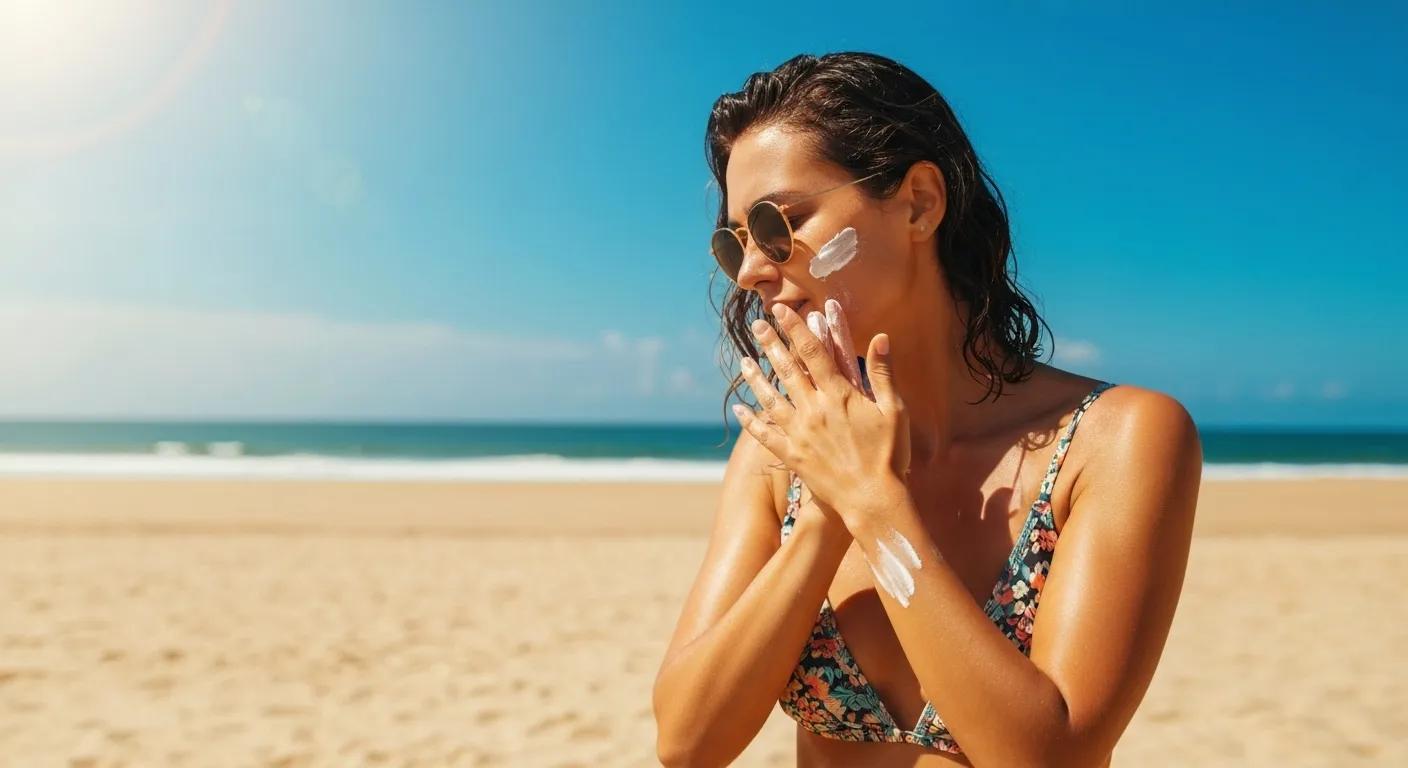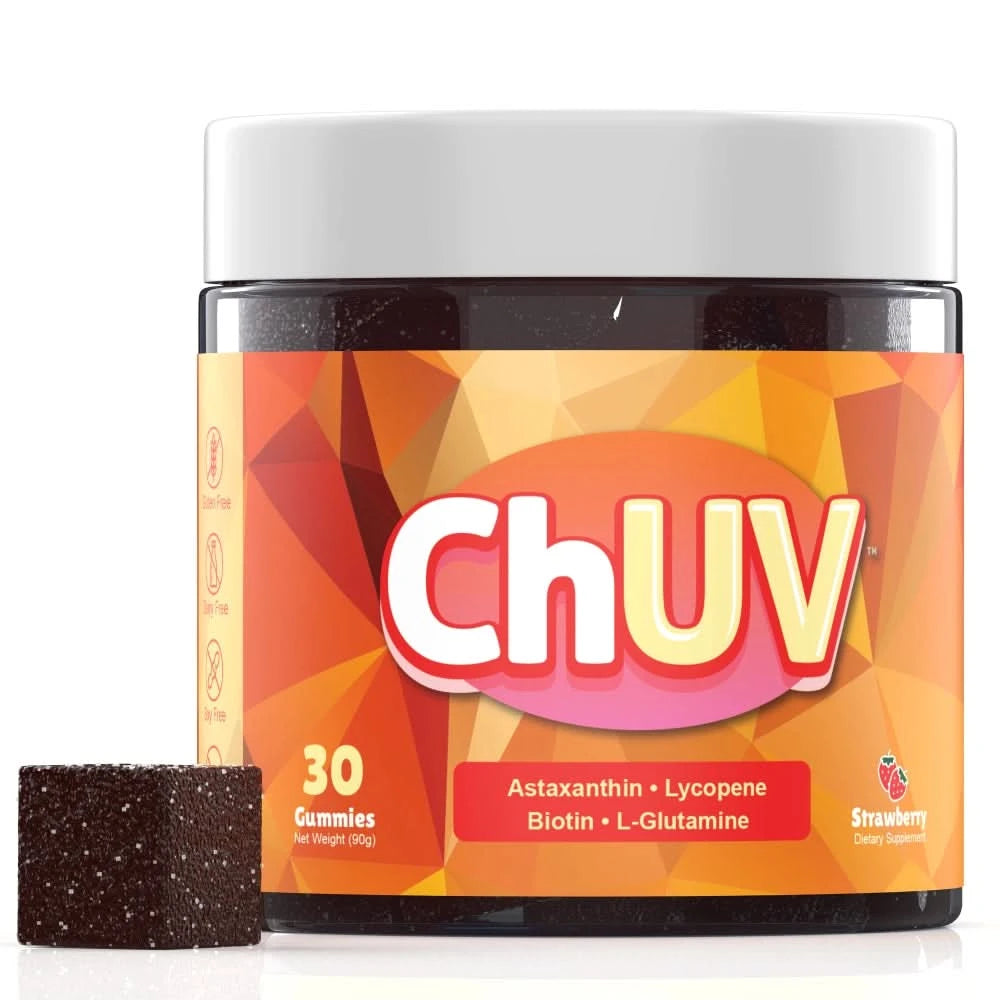
Unlock Astaxanthin's Power: Shield Your Skin from UV Rays with ChUV
Embrace astaxanthin as your internal shield against UV-induced skin damage. As a key player in CayoNutra’s Natural Supplements for a Healthier You collection, this guide will illuminate:
- What astaxanthin is and how it fortifies your skin
- How ChUV Tanning Gummies harness astaxanthin for a sun-kissed glow and protection
- Why internal sun protection complements your topical sunscreen routine
- When to anticipate visible results and the ideal dosage
- Essential safety insights for incorporating astaxanthin into your daily regimen
What Is Astaxanthin and How Does It Protect Your Skin from UV Damage?
Astaxanthin, a potent carotenoid antioxidant derived from microalgae, actively neutralizes UV-generated free radicals within the epidermis and dermis. This process significantly reduces oxidative stress and safeguards your DNA, leading to visibly healthier skin.
Ambati, R. R., et al., “Astaxanthin: Sources, Extraction, Stability, Biological Activities and Its Commercial Applications” (2014)
Its remarkable ability to integrate deeply into cell membranes, coupled with superior free-radical scavenging capabilities, establishes a robust foundation for photoprotection and anti-aging benefits.
What Makes Astaxanthin a Superior Antioxidant for Skin Health?
Astaxanthin stands out among antioxidants due to its unique molecular structure, exceptional lipid solubility, and potent free-radical quenching ability:
- Conjugated Double Bonds facilitate efficient quenching of singlet oxygen.
- Lipid Solubility promotes seamless integration into cell membranes, offering targeted defense.
- Radical-Scavenging Capacity surpasses that of vitamins C and E in neutralizing peroxyl radicals.
These inherent qualities ensure astaxanthin effectively intercepts oxidative stress before it can compromise collagen integrity.
How Does Astaxanthin Shield Skin Cells from UV Radiation?
Astaxanthin primarily absorbs UV energy within the UV-A spectrum and neutralizes the reactive oxygen species generated by UV exposure. This action inhibits lipid peroxidation and inflammatory pathways, thereby preserving cell membrane integrity and supporting the skin's natural repair mechanisms, which helps reduce sensitivity to sunburn.
Can Astaxanthin Prevent Photoaging and Skin Damage?
Absolutely. By modulating matrix metalloproteinases and inflammatory markers, astaxanthin plays a crucial role in maintaining collagen levels and preserving elastin structure. Consistent intake promotes skin elasticity, smooths the appearance of fine lines, and helps delay the visible signs of photoaging.
Camera, E., et al., “Astaxanthin, a dietary carotenoid, protects human dermal fibroblasts against UVA-induced oxidative damage” (2009)
How Do ChUV Tanning Gummies Use Astaxanthin to Provide Sunless Tanning and Skin Protection?

What Are the Key Ingredients in ChUV Gummies Besides Astaxanthin?
Here’s a closer look at the core compounds within ChUV Gummies and how they work together synergistically.
| Compound | Mechanism | Benefit |
|---|---|---|
| Astaxanthin | Quenches singlet oxygen and neutralizes free radicals | Protects against UV damage |
| Lycopene | Acts as a precursor for skin tone | Promotes a natural, golden hue |
How Do ChUV Gummies Deliver a Natural Tan Without UV Exposure?
By supplying carotenoids that deposit within the stratum corneum, ChUV Gummies impart a subtle, warm glow as pigment gradually accumulates. This innovative process bypasses UV-induced DNA damage while delivering an even, natural-looking sunless tan.
What Results Can Users Expect from ChUV Tanning Gummies?
Users often report a noticeable decrease in sunburn sensitivity and an improvement in skin radiance within 4–6 weeks, with a gentle tan beginning to develop by week 8. Consistent use has also been linked to enhanced firmness and a more even complexion, according to customer testimonials.
Why Is Oral Photoprotection with Astaxanthin Important Compared to Traditional Sunscreens?

Astaxanthin-based oral photoprotection provides systemic defense by neutralizing UV-induced free radicals deep within the skin layers, effectively complementing the surface protection offered by traditional sunscreens. This integrated approach addresses both external and internal aspects of UV damage.
How Does Internal UV Defense Complement Topical Sunscreens?
Internal antioxidants target reactive oxygen species and inflammatory mediators located beneath the skin's surface—areas that topical sunscreens cannot effectively reach. When used together, they create a comprehensive shield against both UVA and UVB-induced harm.
What Are the Advantages of Using Astaxanthin as a Natural Internal Sunscreen?
- Broad-Spectrum Radical Quenching within dermal cells boosts overall photoprotection.
- Anti-Inflammatory Action helps reduce redness and speeds up skin recovery.
- Safe Daily Use with minimal potential for interactions supports long-term skin health.
These significant advantages position astaxanthin as a valuable addition to your existing sun care regimen.
How Long Does It Take for Astaxanthin and ChUV Gummies to Show Skin Protection and Tanning Effects?
Photoprotective benefits typically become measurable within four weeks, while visible tanning effects gradually build over six to eight weeks of consistent daily intake. Achieving optimal results relies on sustained usage.
How Does Astaxanthin Improve Skin Elasticity and Reduce Wrinkles Over Time?
Astaxanthin actively stimulates collagen synthesis and inhibits matrix metalloproteinases, which collectively enhance skin firmness and smooth the appearance of fine lines. Over a period of three to six months, users commonly report noticeable improvements in skin texture and elasticity.
What Are the Common Questions About Astaxanthin’s Safety and Side Effects?
Astaxanthin is widely recognized as safe for daily supplementation, supported by extensive research and a favorable profile regarding interactions.
Is Astaxanthin Safe for Daily Use as a Skin Supplement?
Yes, clinical studies confirm that daily doses of up to 12 mg are well-tolerated by healthy adults. Its natural origin and inherent anti-inflammatory properties further underscore its safety for long-term use.
Are There Any Known Side Effects or Interactions with Astaxanthin?
Mild gastrointestinal discomfort is uncommon, and astaxanthin exhibits a low potential for drug interactions. However, individuals taking anticoagulant or immunosuppressant medications should consult with a healthcare professional before starting supplementation.
Astaxanthin’s unique antioxidant capabilities offer a potent internal defense against UV exposure, working in harmony with topical sunscreens for comprehensive photoprotection. ChUV Tanning Gummies expertly leverage this mechanism to deliver both enhanced skin health and a natural, sun-kissed glow. By adhering to the recommended dosage and maintaining consistent use, you can experience improved skin resilience, enhanced elasticity, and a gentle tan without the risks associated with UV exposure. Discover these remarkable benefits through CayoNutra’s specialized formulations and embark on a safer, science-backed journey to radiant skin.

